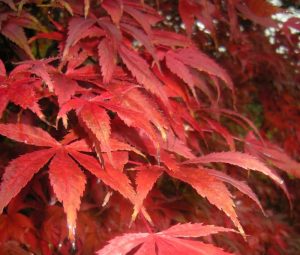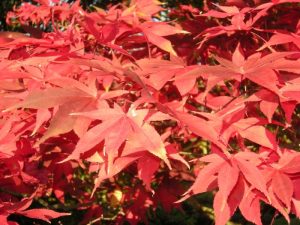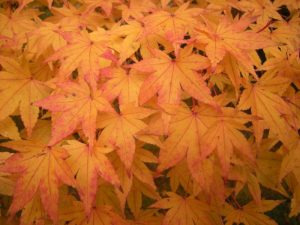The true Acer palmatum is not often seen in gardens as there are a plethora of cultivars in the trade that are marketed well. Acer palmatum is native to China, Korea as well as Japan. A mature specimen of the species can be seen in full autumn colour to the west of the Garden. Where room is available, this species produces reliable colours for autumn. For smaller gardens there are a myriad of slower-growing, smaller forms to choose from.
In 2005, seed was collected from a plant growing at 935m on a west-facing slope of Mount Hokkada in Aomori Prefecture, Japan. This plant was 8m x 10m in size growing in dry stony medium loam in dense broadleaved woodland. Associated flora included Acer tschonoskii, Betula ermanii, Sorbus commixta, Viburnum furcatum. The resultant seedlings from this expedition are now planted at Benmore Botanic Garden in Argyll.
Acer palmatum ‘Osakazuki’ is a red-colouring cultivar that forms a 4m wide rounded, shaped canopy typical of the species to a height of 5m. The leaves have fine toothed edges with deeply cut lobes. On dropping, the leaves curl and shrivel, so they are not a weighty problem to collect and compost. Remember, leaf mould is the gold of the composting cause. Left to rot, it produces the best top dressing mulch of all organic material. On a glorious autumn day there is no finer exercise than leaf raking.



